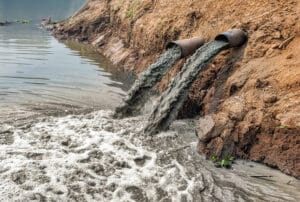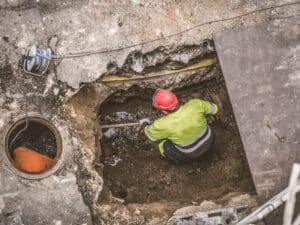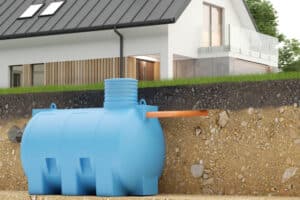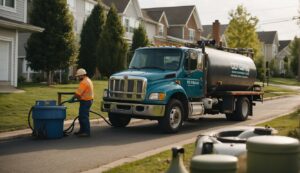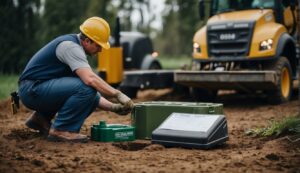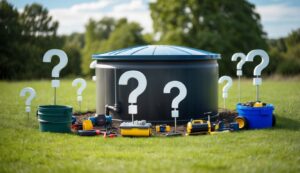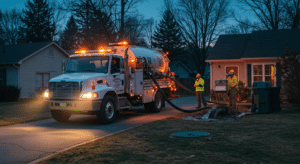Septic systems often use gravity to move wastewater to the drainfield. With a gravity-fed system, the wastewater is partially treated while it’s still in the tank. From here, it flows out of the tank and down into the drainfield through a series of pipes.
But what happens when a gravity-fed system just won’t do the job? Alternative solutions, like a pressurized shallow drainfield, or PSD, may be the best option.
What is a Pressurized Shallow Drainfield?
A PSD uses pressure instead of gravity to distribute wastewater after it has been pretreated by an I/A OWTS septic system.
PSDs are placed 6-12″ from the surface to allow maximum treatment by natural soil processes.
A PSD is a shallow, narrow drainfield that uses pressure dosing to move wastewater into a PVC drainfield.
There are a few configuration options with a pressurized shallow drainfield.
Half Pipe/Chamber
With the half pipe/chamber configuration, pressurized effluent is squirted up against a cover of 12” PVC half pipe. The half pipe helps protect the trench, but it also distributes the effluent over the trench bottom. As a result, the trench bottom sits just below the ground surface, which is where the biological activity is the greatest.
The chamber configuration is nearly identical to the half pipe configuration. However, chamber systems have the addition of a low-profile chamber that surrounds the half pipe.
Typically, this configuration uses 12” wide channels set 10” into the ground and installed on 3’ centers with 2’ spacing from sidewall to sidewall.
GeoTextile
The GeoTextile configuration is a modular and low-profile variation of a PSD. Its core contains plastic filaments that are wrapped in a geotextile fabric.
GeoTextile PSDs are installed in shallow soil to:
- Enhance microbial activity
- Improve aeration
- Increase nutrient removal
- Enhance plant uptake
With this type of configuration, the pressurized distribution pipe runs along the length of the lateral. This allows for even distribution of wastewater.
What are the Benefits of a PSD?
A pressurized shallow drainfield system offers many benefits compared to a gravity-fed system.
Conventional drainfield failure is often due to an excess build-up of biological mat, or biomat. Biomat is an impermeable layer of wastewater solids, microorganisms and mineral precipitates.
In rare and specific instances, biomat can be useful. For example, in fast-draining soils, biomat can help detain wastewater in the trench, which can help filter out pathogens and allow for the decomposition of some materials.
But the risks of biomat clogging the drainfield far outweigh the potential benefits. With a gravity-fed system, there is no reliable or predictable way to manage the formation of biomat.
A PSD greatly reduces or eliminates the risk of clogging. Even distribution of effluent and shallow installation help prevent clogging and take full advantage of soil microbial activity.
If you are installing an advanced septic system on your property, you may want to consider a pressurized shallow drainfield. Not only does this type of drainfield improve the absorption of wastewater effluent, but it also ensures that the effluent is evenly distributed for reduced risk of drainfield failure.

